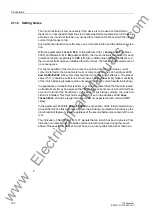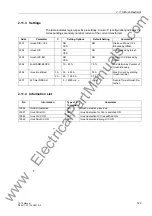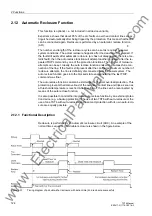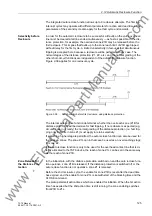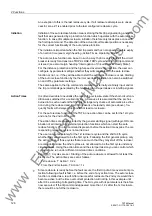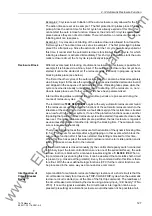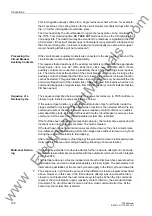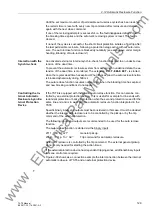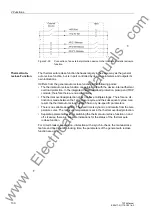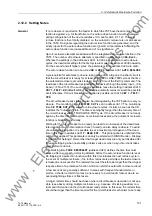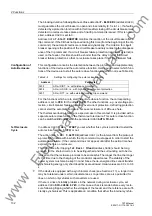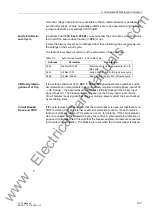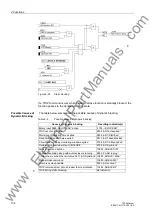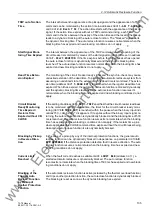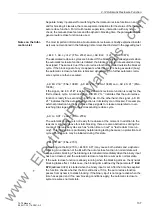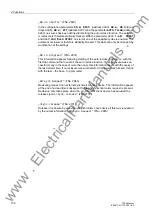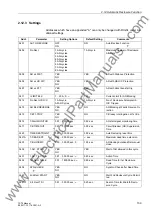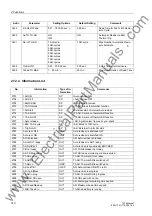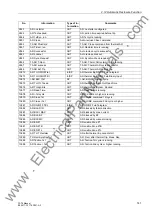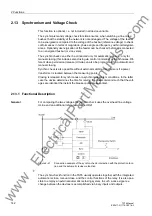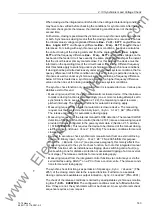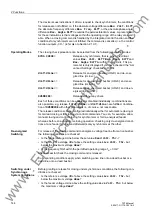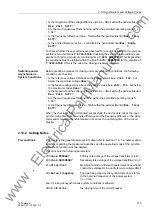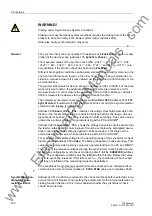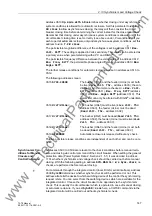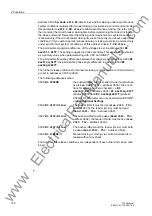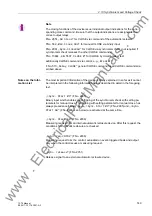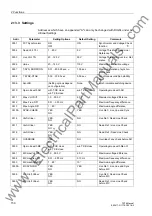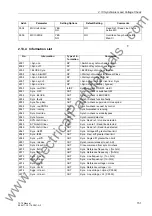
2 Functions
136
7ST6 Manual
E50417-G1176-C251-A3
No More Cycles
Possible
The maximum number of reclosure attempts specified in the settings is reached. If
now a TRIP command is given within the reclaim time, the auto reclose function is dy-
namically blocked during 500 ms. The auto reclose function resumes its normal state
when the blocking time has expired and new blocking conditions do not apply.
Manual Close
The parameter
T-BLOCK MC
(address
3423
) specifies whether the auto reclose func-
tion responds to a manual CLOSE command.
If
T-BLOCK MC
is set to 0, the auto reclose function does not respond on detecting a
manual CLOSE command. If the parameter
T-BLOCK MC
is set to
≠
0, the auto reclo-
sure function is dynamically blocked on detecting a manual CLOSE command. This is
also true if the auto reclose function has not yet been started, or if it is already statically
blocked.
On appearance of the manual CLOSE signal, the manual CLOSE blocking time
defined in the parameter
T-BLOCK MC
(address
3423
) and the dynamic blocking time
of 500 ms are launched. Both times overlap. If the dynamic blocking time is longer than
the manual CLOSE blocking time, the device checks on expiry of the dynamic blocking
time whether the blocking can be reset.
If no more blocking conditions apply, the auto reclose function resumes its normal
state. If the manual CLOSE blocking time is still running when the dynamic blocking
time has expired, the blocking is maintained, and the dynamic blocking time re-
launched.
TRIP by Breaker
Failure Protection
If the breaker failure protection issues a TRIP command, the auto reclose function is
dynamically blocked, even if the set maximum number of cycles is not yet reached.
The indication
„AR DynBlock“
(FNo. 2785) is output. Here the start signal monitor-
ing time must be matched to the breaker failure protection. The auto reclose function
resumes normal state when the dynamic blocking time has expired.
Interaction with an
External Protection
Device
The auto reclose functions provides binary input and output signals for interaction with
an external protection device.
In the functional description of the auto reclose function, a connection example of the
auto reclose function to an external protection device is shown under margin heading
„Controlling the Internal Automatic Reclosure by an External Protection Device“.
Thermal Auto-
reclose Function
The thermal auto reclose function is not an autonomous function. It is configured to-
gether with the general auto reclose function but can be separately switched
ON
or
OFF
with the parameter
AUTO-TH-AR
(address
3450
). In address
3451
No. of TH-AR
,
the number of reclosure attempts is specified for the thermal auto reclose function.
The thermal auto reclose function behaves largely in the same way as the general
auto reclose function, but is in part controlled by its own parameters and outputs its
own indications (see margin heading „Thermal Auto Reclose Function“ in the function-
al description).
In contrast to the general auto reclose function, there is no settable dead time. The
dead time is dynamic, and results from the temperature curve. A maximum permissi-
ble dead time can be defined with the parameter
Tdead TH MAX
(address
3456
).
After this monitoring time has expired, the thermal auto reclose function is blocked,
and an indication is output with
„AR TH TO Tdead“
after the dead time has expired.
This means that the maximum dead time must be set longer than the expected time
necessary for the line to cool off. The reclosure temperature is set in the thermal over-
load protection (see also Subsection 2.7.4).
www
. ElectricalPartManuals
. com

